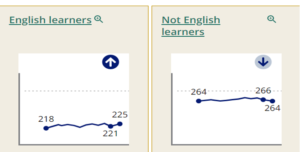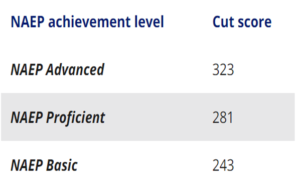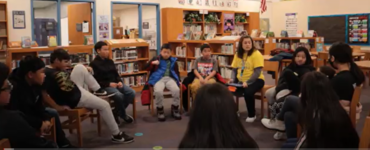This article is a book review of English Learners at Home and at School: Stories and Strategies, by Joyce W. Nutta. 2021. 192 pages, paperback, $ 33.00 USD. ISBN 978-1-68253-690-2
Keywords: teacher education, English second language learners, English language learners, English learners in the K-12 system, immigrant students
Joyce W. Nutta’s (2021) book English Learners at Home and at School: Stories and Strategies is a must read for every teacher. Through stories of immigrant children that are English language learners, Nutta gives us a highly informative glimpse into their hardships. Knowing about students’ immigrant backgrounds will help all teachers develop more understanding and empathy for this student population.
English Learners at Home and at School is structured in six chapters, each telling us a real story about an immigrant child from a different country. The learners’ accounts span a school year and include flashbacks to each learner’s dramatic immigration story. After each story, there is an epilogue that gives further information about the country of origin of the student whose story is told and the school the student is going to, including which type of educational support is offered. Each chapter also includes questions for discussion about the story, which makes this book perfect for pre-service teachers.
The learners’ ages range from four to nineteen. Three of the learners speak Spanish at home. The other three speak either Arabic, Vietnamese, or Tshiluba as their respective native tongues, and some of them speak an additional language. Three of the learners went to an elementary school in Illinois and the other three went to schools in three different states, which are Florida, Texas, and California. The titles of the six chapters of the book are based on the student whose immigration story is being told: (1) Rafael, a boy from Cuba, in preschool; (2) Dibenesha, a girl from the Democratic Republic of Congo, in kindergarten; (3) Josué, a boy from Mexico, in third grade; (4) Anh, a girl from Vietnam, in sixth grade; (5) Dani, a boy from Iraq, in eleventh grade; (6) Loredana, a girl from Venezuela, in her first year of college.
Each chapter recounts the struggles these students face as they navigate a new culture in a foreign language. Sometimes just one teacher can make a difference in a student’s future, which may be even more significant for the struggles of immigrant English language learners, as is so clearly described in the foreword by Dr. Carine Feyten, president and chancellor of Texas Women’s University. She often hears from English language learners from difficult backgrounds who were able to move forward in their education and career due to the support and guidance of one particular teacher who had a significant impact on their lives. Reading the six different accounts of English language learners and their experiences reminds readers that sometimes all learners need is an empathetic teacher who shows understanding and support for them.
How it feels to be a second language learner in a foreign country is not new to Nutta, the author, who as a teenager moved with her family to Italy and therefore can relate to some of the struggles English language learners face in the United States. The stories of the six English learners from different cultural backgrounds are compiled with empathy and understanding from a third person singular narrative style. The stories exemplify how diverse the backgrounds of English language learners can be as for example in age, gender, socioeconomic status, culture, and education of parents.
The growing need for teachers trained to teach English language learners becomes apparent when we look at the statistics. In 2017, English language learners made up on average about 10.2% of the public-school population (National Center for Education Statistics, 2020b). In some states, the percentage was even higher, as for example in California, which had 19.2 % of English language learners in 2017 (National Center for Education Statistics, 2020b). Figures 1 and 2 show the achievement gap apparent between the English language learners and the mainstream population.
 |
 |
Figure 1 shows the achievement gap for the reading scores between English learners and non-English learners. Even though reading scores have been increasing for English learners, there is still a discrepancy between this group and the students who are not English language learners. These learners are still not at a level of basic reading proficiency according to the National Center for Education Statistics (2020a) as can be seen in Figure 2. The need for teachers trained to educate these English learners becomes obvious. Unfortunately, despite these dismal demographics, not all states require their teachers to undergo English as a second language (ESL) training as Lavery et al. have noted (2019).
As the success stories in this book show us, collaboration between ESL specialists, counselors and teachers of other subjects has proven to be beneficial for English language learners. For example, for Rafael from Cuba, a dual language program was beneficial in his development of Spanish together with his new second language, English. Besides this linguistic and cultural support which education in the first language is for English language learners, help or support in other conditions can improve the life and thus the learning of this population. Rafael’s mom was offered a job at the school which solved many other problems she faced, such as, for example, child support and financial problems.
In another case, it was the teacher’s initiative that led to a student (Josué) getting his eyes examined and then finally the prescription glasses he needed to be successful in school. If the teacher had not investigated the problem the student was facing, his eye problem could have gone undetected. In advanced grades, the academic adjustment might be harder for immigrant students because the requirements are higher.
Sometimes a little bit of willingness by the teacher to understand a student’s cultural background can lead to better results. For example, a student from Vietnam (Anh) was not used to giving his opinion on certain topics because he was not used to this form of instruction from his home country. If a teacher does not know about this cultural difference, then it could lead to misunderstandings. An openness towards the learner’s culture also contributes to a better rapport between learner and teacher and creates an accepting atmosphere in the classroom. This openness is not always present on the teacher’s side as Rubinstein-Avila and Lee’s examination of secondary school teachers’ attitudes towards English language learners shows (Rubinstein-Avila & Lee, 2014). Among the negative attitudes among secondary teachers towards this group were deficit beliefs that the English language learners are academically inferior and a negative attitude towards diversity (Rubinstein-Avila & Lee, 2014). Negative attitudes also could lead to teachers not seeing a benefit in helping this group of learners. However, if they could see how they could be helped by minor changes in instruction with, for example, visual aids and/or scaffolding by giving simpler definitions of difficult terms, maybe they would be more willing and open to help.
The positive examples in the book show that it is to the benefit of the English learner if all teachers and counselors work together but also that a little bit of support for the English learner in each class can go a long way as the One-Plus model developed by Nutta (2012) has shown. One of the success stories involves Dibenesha from The Republic of Congo. Her teachers added visual support in the form of clip art which made reading and understanding the text easier for her. The school Dibenesha went to in the United States had teachers using the One-Plus model (Nutta, 2012). One of the strengths of this model is that some additional instructional tools can be included in already present courses for pre-service teachers which prove to be cost efficient and beneficial for immigrant students.
This book makes a useful and interesting contribution to understanding the cultural and linguistic backgrounds of English language learners. It is well-written, keeps the reader engaged, and fosters empathy for the different life stories of the students. Most importantly, the stories of the English learners in this book will better enable teachers to help immigrant learners in their educational journey. As a result, English Learners at Home and at School: Stories and Strategies is highly recommended to any teacher in the K-12 school system and beyond.
References
Lavery, R., Nutta, J., & Youngblood, A. (2019). Analyzing student learning gains to evaluate differentiated teacher preparation for fostering English learners’ achievement in linguistically diverse classrooms. Journal of Teacher Education, 70(4), 372–387. https://doi.org/10.1177/0022487117751400
National Center for Education Statistics (2020a). Nation’s report card: Reading 2020. Washington D.C.: U.S. Department of Education, Institute of Education Sciences. Retrieved from https://www.nationsreportcard.gov/reading/nation/groups/?grade=8
National Center for Education Statistics. (2020b). The condition of education 2020, English Language Learners in Public Schools. Washington D.C.: U.S. Department of Education, Institute of Education Sciences. Retrieved from https://nces.ed.gov/programs/coe/pdf/coe_cgf.pdf
Nutta, J. (2021). English learners at home and at school: Stories and strategies. Harvard Education Press.
Nutta, J., Mokhtari, K., & Strebel, C. (2012). Preparing every teacher to reach English learners: A practical guide for teacher educators. Harvard Education Press.
Rubinstein-Avila, E. & Lee, E. H. (2014). Secondary teachers and English language learners (ELLs): Attitudes, preparation and implications. The Clearing House, A Journal of Educational Strategies, Issues and Ideas, 87(5), 187–191. https://doi.org/10.1080/00098655.2014.910162






